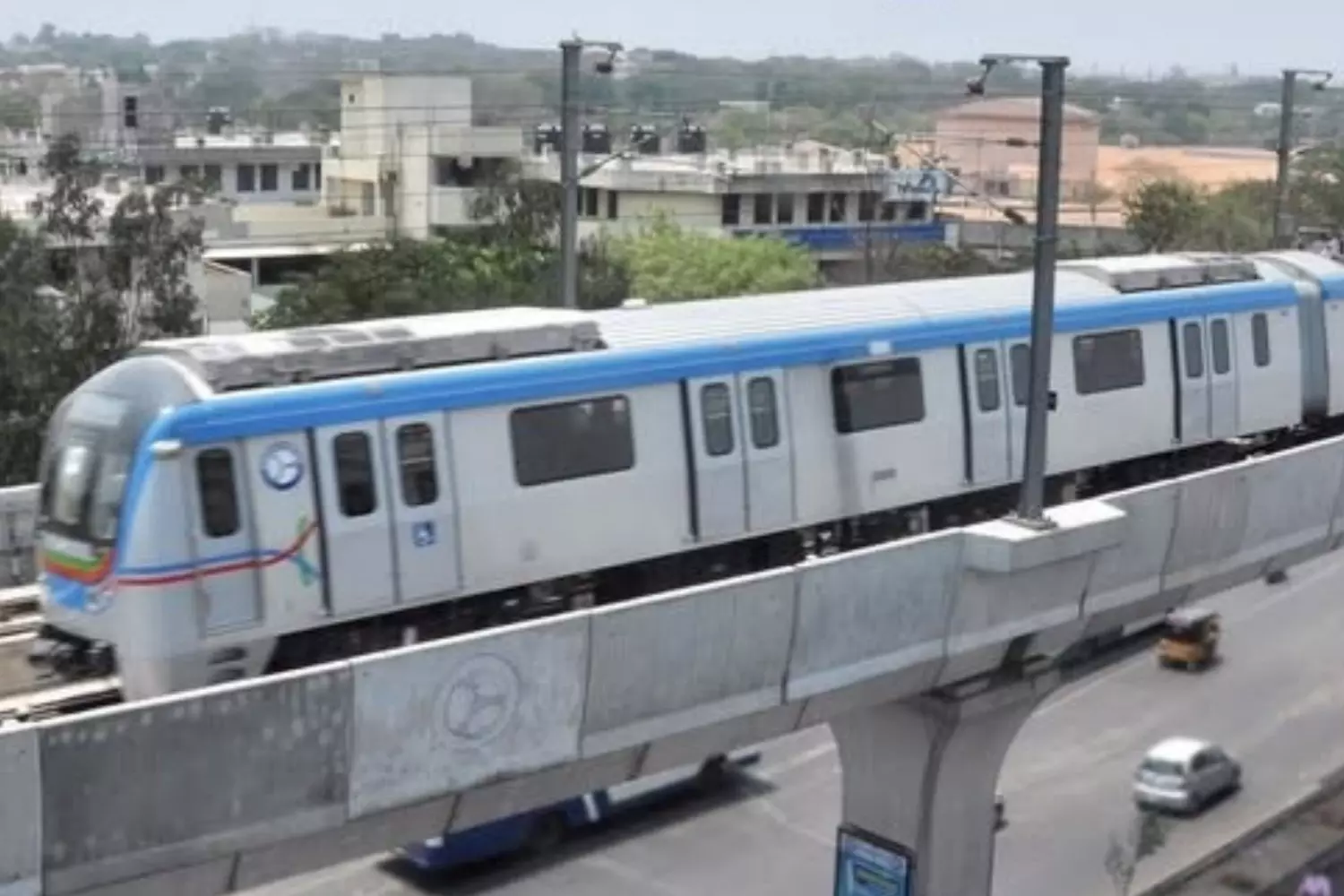
What is future of Hyderabad Metro as Telangana govt takes over from L&T?
State to absorb Rs 13,000 crore debt. Chief Minister A Revanth Reddy recently held talks with L&T representatives, after which the company agreed to sell its entire stake in Phase 1 of the project

The future of Hyderabad Metro Rail has entered a new phase with the Telangana government formally taking over operations from L&T, which decided to withdraw, citing unsustainable losses.
Chief Minister A Revanth Reddy recently held talks with L&T representatives, after which the company agreed to sell its entire stake in Phase 1 of the project.
Also read: Hyderabad floods: Old City, IT hubs inundated as Musi River overflows
Under the agreement, the state government will assume responsibility for Rs 13,000 crore of outstanding debt while making a one-time equity settlement of Rs 2,000 crore to L&T. The decision marks a major shift in Hyderabad’s urban transport system, one of the largest public-private partnership (PPP) projects of its kind in the world.
Currently, the Metro runs across three corridors covering 69.2 km:
Corridor I: Miyapur to LB Nagar (Red Line)
Corridor II: JBS to MGBS (Green Line)
Corridor III: Nagole to Raidurg (Blue Line)
Why L&T walked away
L&T Metro Rail, which built and ran the city’s 69.2 km Phase 1 network, struggled with mounting financial pressure. Despite a daily ridership of 4.8 lakh and annual revenues of over Rs 1,100 crore, the company reported a loss of Rs 625 crore in FY25. Cumulative losses since inception have crossed Rs 6,600 crore.
Experts attribute the collapse to multiple factors:
Inability to monetise station space and advertising.
Lack of last-mile connectivity, discouraging potential commuters.
Limited number of coaches leading to overcrowding during peak hours.
Soaring loan repayments, with annual interest payouts of Rs 1,273 crore on borrowings of Rs 12,500 crore.
Also read: How Telangana turned organ donation into India’s most inspiring life-saving movement
“To make a Metro system profitable, it cannot rely only on ticket sales from passengers. It needs commercial income as well. The Telangana government had allocated prime commercial land along major roads in Hyderabad for the metro project. Though commercial spaces were built at metro stations, L&T Metro Rail failed to lease them out. They also failed to tap revenue from advertisements on trains, stations, and pillars. Without significant revenue from rentals and ads, the company struggled to repay loans taken for construction, cover maintenance expenses, and recover investment, leading to mounting losses,” said Madduri Sundararama, a retired IRCTS 1981 batch officer and former Chief Commercial and Operating Officer of South Central Railway, told The Federal Telangana.
Hyderabad Metro slips in national rankings
Once India’s second-largest Metro network, Hyderabad has now fallen to ninth place. To meet growing transport needs, the state government has proposed Phase 2 extensions covering 163 km across eight new lines. However, the Centre has kept these proposals pending, insisting on a joint action plan linking Phase 1’s PPP model with the government-led expansion.
Chief Minister Revanth has personally intervened to break the deadlock, expressing confidence that central approvals will follow soon.
Bright future under state control?
Many experts believe the Metro will benefit from full government ownership. Retired railway officer SNC Ramakrishnacharyulu described the takeover as a “blessing”, pointing to Delhi, Bengaluru, and Kolkata, where government corporations have successfully managed Metro operations.
Also read: Telangana rains: IMD issues orange alert; CM asks officials to stay alert
“Delays, cost escalations, and weak management hurt Hyderabad Metro under private control. With the state at the helm, the system has a better chance of stability and expansion,” he said.
Former RTC MD and retired IPS officer Utlapati Appa Rao called it a positive development, stressing that the government should now focus on passenger convenience. “Profits should not be the priority. The number of trains and coaches must be increased to reduce overcrowding,” he added.
The finances: interest burden outweighs revenue
Despite daily earnings exceeding Rs 1.5 crore, Hyderabad Metro’s revenues are dwarfed by its debt obligations. In FY23, the system earned Rs 703.20 crore from tickets, station leases, and ads against operating expenses of Rs 429 crore. Yet the steep annual interest burden turned the balance sheet red.
Earlier, the then BRS government attempted to ease pressure by granting L&T an interest-free loan of Rs 900 crore, monetising 15 acres of land in Raidurg, and allowing sub-leasing of prime malls in Erramanjil, Punjagutta, and Hitec City. These measures reduced L&T’s debt burden by nearly Rs 5,000 crore but were insufficient to stem the losses.
Political controversy over assets
The takeover has also sparked political accusations. BRS working president KT Rama Rao (KTR) accused Chief Minister Revanth of orchestrating L&T’s exit to seize control of 280 acres of prime Metro lands and associated malls. He alleged the decision saddled the state with an additional liability of Rs 15,000 crore.
The government has rejected these allegations, maintaining that the move was essential to secure the Metro’s future and accelerate Phase 2 expansion.
Next steps for Hyderabad Metro
Experts say the immediate priorities are:
Increasing coaches from three to six per train.
Adding more trains during peak hours.
Strengthening last-mile connectivity through affordable feeder services.
Expanding non-fare revenue through ads, leasing, and retail partnerships.
Forum for Good Governance president Y Padmanabha Reddy warned that without efficient management, the Metro may continue to struggle despite state takeover. He also questioned whether extending the network through the Old City would significantly boost ridership.
A turning point
Hyderabad Metro Rail, once hailed as the largest PPP metro project in the world, is at a crossroads. The government takeover has given the project a lifeline, but challenges remain in boosting ridership, improving connectivity, and stabilising finances.
As the state readies proposals for Phase 2, the success or failure of the new model will likely decide whether Hyderabad can reclaim its position among India’s leading metro cities.
(This article was originally published in The Federal Telangana)

